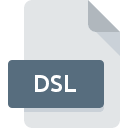.DSL File Extension

Lingvo Dictionary File
| Developer | ABBYY |
| Popularity | |
| Category | Data Files |
| Format | .DSL |
| Cross Platform | Update Soon |
What is an DSL file?
In the vast digital landscape, various file extensions serve specific purposes, often reflecting the diverse needs of users. One such extension, .DSL, is associated with Lingvo dictionaries, a popular tool for language learners and translators.
This article delves into the origin, history, structure, technical specifications, advantages, and disadvantages of .DSL files. Additionally, it provides insights into converting and accessing these files across different operating systems.
More Information.
Initially introduced as a proprietary format by ABBYY, .DSL files served as the storage format for dictionaries within the Lingvo software ecosystem.
These dictionaries encompassed translations, definitions, examples, and other linguistic data necessary for language comprehension and translation tasks.
With the rise in demand for multilingual support and the need for comprehensive language resources, ABBYY continuously expanded the range of dictionaries available in .DSL format.
Origin Of This File.
The .DSL file extension is primarily associated with ABBYY Lingvo, a comprehensive dictionary software developed by ABBYY, a leading provider of document recognition, data capture, and linguistic technologies.
Lingvo, introduced in the late 1990s, aimed to facilitate language learning and translation tasks by providing a vast collection of multilingual dictionaries in various languages.
File Structure Technical Specification.
.DSL files typically adhere to a structured format optimized for efficient storage and retrieval of linguistic data.
While specific details may vary based on the version and implementation, a typical .DSL file consists of indexed entries, each containing relevant information such as word definitions, translations, phonetic pronunciations, and grammatical attributes.
These entries are organized systematically to facilitate quick access and seamless integration with the Lingvo software interface.
The technical specifications of .DSL files include support for Unicode encoding to ensure compatibility with a wide range of languages and character sets.
Additionally, metadata may accompany the dictionary entries to provide information about the source, copyright, and other relevant details.
How to Convert the File?
Converting .DSL files to other formats or vice versa may require specialized software or tools capable of handling dictionary data. Several approaches can be considered for converting .DSL files:
- Third-Party Conversion Tools: Some third-party software applications may offer conversion functionalities, allowing users to convert .DSL files to more widely supported formats such as .txt or .xml.
- Manual Extraction and Conversion: Users can manually extract data from .DSL files using text editors or scripting languages and then convert it to the desired format using custom scripts or converters.
- Export Functionality: Some dictionary software applications may offer export functionality, enabling users to export .DSL dictionaries to alternative formats supported by other software or platforms.
Advantages And Disadvantages.
Advantages:
- Comprehensive Language Support: .DSL files offer access to a vast array of dictionaries covering numerous languages, enabling users to expand their linguistic proficiency.
- Offline Access: With .DSL files, users can access dictionary resources offline, eliminating the need for constant internet connectivity, which is particularly beneficial in areas with limited or unreliable internet access.
- Customization: Users can customize their dictionary collections by adding or removing .DSL files based on their specific language learning or translation requirements.
- Fast Search and Retrieval: The indexed structure of .DSL files facilitates fast and efficient searching, allowing users to quickly locate relevant translations, definitions, or examples.
Disadvantages:
- Proprietary Format: .DSL files are associated with ABBYY Lingvo, making them less interoperable with other dictionary software or platforms.
- Limited Flexibility: While .DSL files offer comprehensive language resources, they may lack some advanced features and functionalities found in more modern language learning or translation tools.
- Updates and Maintenance: Users may encounter challenges in updating or maintaining .DSL dictionaries, as it often relies on ABBYY’s support and updates.
How to Open DSL?
Open In Windows
- Install ABBYY Lingvo or other compatible dictionary software that supports .DSL files.
- Double-click on the .DSL file, and it should automatically open in the installed software.
Open In Linux
- While ABBYY Lingvo may not have native support for Linux, users can explore alternative dictionary software available for the platform.
- Some software may support .DSL files or offer compatibility through plugins or extensions.
Open In MAC
- Similar to Windows, users can install ABBYY Lingvo or compatible dictionary software on their macOS device.
- Double-click on the .DSL file to open it in the installed software.













